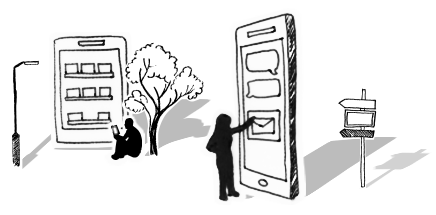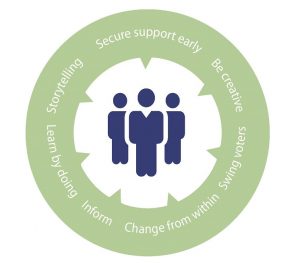




Making Change Stick
“People don’t resist change. They resist being changed!” – Peter Senge.
No matter how capable a new piece of technology, or how necessary an updated process, if you don’t get the people who are to use the system on board, your change won’t stick.
Tips on getting the whole team onboard
Here are some tips to help bring all the affected people into the fold to ensure widespread user adoption and lasting change.
Secure support early
Help to secure support in your change programme at local level early on in the process. You can do this by educating the whole team about what the change is, why it is happening and crucially how each of them will benefit from its implementation. It also pays to give employees the opportunity to get involved.
Be creative
Use creative communications to get the message across. There are a variety of different media, from illustrations to animation. Each business is different, so be sure to pick an art form that compliments your brand and culture. This will help your employees to get excited about the change and become more committed to its successful implementation.
Use storytelling
Being creative is of course important, but it is also crucial to have some substance. You should tell a clear and compelling story detailing why the change is necessary and how things will be better after its implementation – an enticing view of the future.
Effect change from within
Nobody likes to be dictated to, so it is vital that you work with employees and listen to their concerns. They will be a lot more receptive to change from within than top-down change, so identify and support change champions within the business who can effect change at local level and bring their colleagues on board with them. Never forget that the people should be your main focus!
Let people learn by doing
Each role within your business will have different ways of working and different skills. It is important that you accurately gauge what support and learning each set of end users will require. Remember that people will have to learn and embed new behaviours and working practices. A good way of embedding these for the long term is with close, collaborative and hands-on workshops.
Another idea is to let people help define future process too. This will not only help to ensure it is fit for purpose, but it’s also a great story – this new way of working hasn’t been written by a load of consultants, our own people created it!
Keep employees informed
During the change programme, it pays to keep people up to date with the progress of the project. By now, they should be involved in and hopefully excited about the change.
They should also have a vested interest, having understood the need for change and its benefits to them and the business.
It makes sense to keep employees informed throughout the process because ultimately, they’re going to be the ones affected. They are vitally important to the success of the implementation, so you should let them know this by including them.
Focus on the ‘swing voters’
With any major change, there will always be a keen group of early adopters, a group of detractors and the largest group, those in between, the ‘swing voters’. Just like a politician in an election, it is prudent to direct a large part of your attention on this third group. This is for two good reasons:
1) They are the largest group and therefore their collaboration is very important.
2) They are on the fence, and it will only take a relatively small amount of extra attention to bring them on board.
Get in touch to find out how we can help your business make change stick.
To get the latest change tips, advice and guidance directly to your inbox, sign up to our monthly Business Change Digest.

